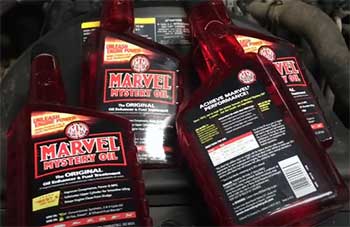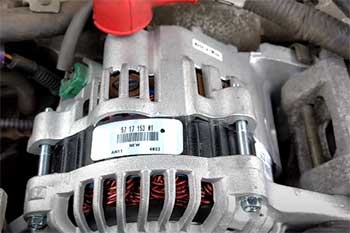I’m not one to throw money at every car product promising miracles, but ATP AT-205 Re-Seal? It’s the real deal. If your car’s leaking oil or transmission fluid, this stuff can save you from shelling out hundreds—or thousands—on repairs.
It’s a fast-acting, professional-strength sealant that rejuvenates rubber seals and gaskets, stopping leaks in their tracks. I’ve seen it work wonders on my own ride, and I’m betting you’ll be just as impressed.
Trust me, if you’re dealing with pesky leaks, AT-205 is a game-changer you need in your garage.
My Personal Experience With AT-205 Re-Seal
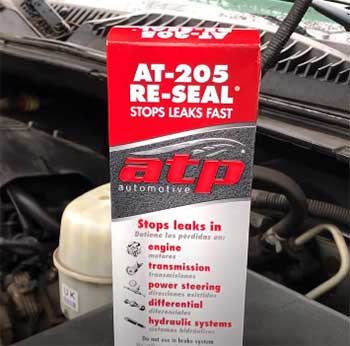
Picture this: I’m staring at a small puddle of oil under my 2008 Honda Accord, a trusty old beast with 180,000 miles on the clock.
The rear main seal was the culprit, and my mechanic quoted me a jaw-dropping $2,000 to fix it.
No way was I ready to drop that kind of cash. After some late-night scrolling through car forums, I stumbled across AT-205 Re-Seal.
The reviews were glowing—people swore it stopped leaks in everything from engines to power steering systems. I figured, at less than $30 a bottle, what did I have to lose?
I picked up an 8-ounce bottle from Amazon and got to work.
The process was dead simple: warm up the engine, pour in the AT-205 (one bottle for my 5-quart oil capacity), and drive for a bit to let it circulate. I was skeptical, expecting maybe a slight improvement at best.
But after a couple of days and about 50 miles of driving, the oil spots on my driveway shrank to a few measly drops. By the end of the week, they were gone. Completely. My oil pan was dry, and I didn’t need to top off the oil for weeks. I was floored.
What struck me most was how straightforward it was. No special tools, no mechanical wizardry required—just pour and drive. I used it again during my next oil change as a preventive measure, and my Accord’s still leak-free six months later.
I’ve since recommended it to my buddy with a creaky old Jeep, and he’s had similar luck with a power steering leak. It’s not a cure-all for catastrophic damage, but for worn seals? It’s like giving your car a second wind.
Pros of AT-205 Re-Seal
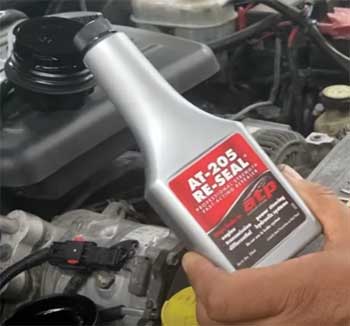
- Fast-Acting Formula: Let’s talk speed. AT-205 doesn’t mess around. Most users, including me, notice results within a few days or about five hours of driving. I poured it into my Accord, drove around for a weekend, and bam—no more oil puddles. The product’s polymer-based formula gets to work quickly, softening and rejuvenating hardened rubber seals without needing a mechanic’s touch. If you’re in a pinch and need a quick fix, this is your go-to.
- Versatility Across Systems: One thing I love about AT-205 is how it plays nice with almost everything under the hood. It’s compatible with conventional and synthetic oils, automatic transmission fluid (ATF), gear oil, power steering fluid, and hydraulic systems. I’ve used it in my engine, and others on forums like Reddit and Jeep Wrangler TJ swear by it for transmissions and differentials. It’s like a Swiss Army knife for leaks, tackling everything from rear main seals to power steering pumps.
- No Harmful Petroleum Distillates: Unlike some stop-leak products that can turn your seals into mush over time, AT-205 is free of petroleum distillates. This means it won’t over-swell or degrade your gaskets, which is a huge relief. I was nervous about dumping chemicals into my engine, but knowing it’s designed to recondition rather than bloat seals gave me peace of mind. It’s safe for your engine’s internals, so you’re not trading one problem for another.
- Cost-Effective Solution: Let’s be real—car repairs can bleed your wallet dry. A rear main seal replacement could cost you anywhere from $1,000 to $3,000, depending on your ride. AT-205? It’s about $25-$30 for an 8-ounce bottle. For the price of a couple of pizzas, you can potentially save thousands. I avoided a massive repair bill, and plenty of users on Amazon and Cadillac Owners Forum echo that sentiment, calling it a “lifesaver” for their budgets.
- Easy to Use for DIYers: You don’t need to be a gearhead to use AT-205. I’m no mechanic—just a guy who knows his way around an oil change—and I had zero trouble. The instructions are clear: add one bottle per 5-6 quarts of oil or fluid, drive for a bit, and check for leaks. No special tools, no tearing apart your engine. It’s so simple, you’ll wonder why you didn’t try it sooner.
Not-So-Good Parts of AT-205 Re-Seal
- Not a Fix for Major Damage: I’ll be straight with you: AT-205 isn’t a miracle worker. If your seals are torn, cracked, or completely shot, this stuff won’t help. It’s designed to rejuvenate hardened or shrunken rubber, not patch up physical damage. A user on IH8MUD.com mentioned their power steering pump “blew up” after using AT-205, likely because the seals were too far gone. If your leak’s a gusher, you’re probably headed to the shop.
- Requires Driving Time: While AT-205 is fast-acting, it’s not instant. You need to drive for about five hours to let it circulate and do its thing. For me, this wasn’t a big deal—I just went about my usual commute. But some folks on Chevy HHR Network grumbled about needing to put in miles before seeing results. If you don’t drive much, it might take a week or two to know if it worked.
- Limited Effectiveness on Industrial Vehicles: AT-205 shines for passenger cars, but it’s not as reliable for heavy-duty equipment. Reviews on Ride Mission noted that owners of larger industrial vehicles, like tractors, didn’t see the same success. If you’re trying to fix a leak in a bulldozer or a semi, you might need something stronger or a professional fix.
- Ongoing Maintenance May Be Needed: Here’s a heads-up: some users, like one on Cadillac Owners Forum, say you might need to add AT-205 at every oil change to keep leaks at bay. I didn’t need to do this—my Accord’s been fine for months—but for high-mileage vehicles, the seals might dry out again over time. It’s not a dealbreaker, but it’s something to keep in mind if you’re hoping for a one-and-done fix.
Maintenance Tips For Using AT-205 Re-Seal
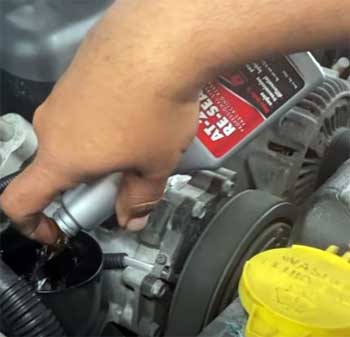
- Warm Up Your Engine First: Before you pour in AT-205, let your engine run for 5-10 minutes to warm up the seals and gaskets. I did this with my Accord, and it seemed to help the product circulate better. Warm seals are more pliable, so the polymer in AT-205 can penetrate and rejuvenate them more effectively. Just don’t skip this step—it’s key to getting the best results.
- Use the Right Dosage: The rule of thumb is 1 ounce of AT-205 per quart of oil or fluid. My Accord’s engine holds 5 quarts, so one 8-ounce bottle was perfect. For smaller systems like power steering, you might only need half a bottle. Check your vehicle’s fluid capacity and measure carefully. Overdoing it won’t hurt, but why waste product? A user on Reddit mentioned using 1.33 ounces per quart for power steering, so adjust based on your system.
- Drive After Adding It: Don’t just pour and park. You need to drive for at least 5 hours to let AT-205 work its magic. I took my car on a few errands and a weekend road trip, and that was enough to see results. If you’re not driving much, take it for a spin around town to get the fluid circulating. The more the product moves through the system, the better it works.
- Monitor for Leaks: After adding AT-205, keep an eye on your driveway or garage floor for a week or two. I checked mine daily, and the oil spots got smaller each day until they vanished. If you don’t see improvement after 5-10 hours of driving, your seals might be too damaged, and it’s time to call a mechanic. A guide from Cars.com can help you pinpoint the leak’s source if you’re unsure.
- Consider Preventive Use: Even if you don’t have a leak, AT-205 can be a great preventive tool. A user on Honda Odyssey Forum mentioned adding it to their 2002 van’s oil to stop leaks before they started. I’ve started doing this every other oil change, especially since my Accord’s got high mileage. It’s like giving your seals a spa day to keep them soft and flexible.
Comparison With Other Stop-Leak Brands
I’ve pitted AT-205 Re-Seal against three heavyweights in the stop-leak world: BlueDevil Stop Leak, Bar’s Leaks, and Lucas Oil Stop Leak.
Drawing from my own experience, user reviews on forums like Reddit, Jeep Wrangler TJ, and Cadillac Owners Forum, and posts on X, here’s how they stack up head-to-head. Each comparison focuses on key factors like effectiveness, compatibility, ease of use, price, and safety.
- AT-205 Re-Seal Vs. BlueDevil Stop Leak
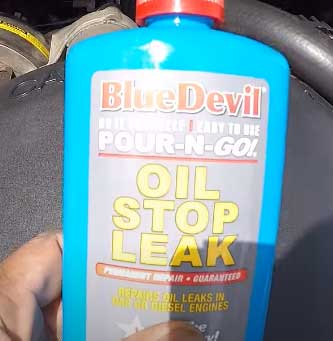
BlueDevil Stop Leak is a popular choice for rear main seals and power steering leaks, but how does it fare against AT-205? Effectiveness-wise, both use polymer-based formulas to rejuvenate rubber seals.
AT-205 stopped my Accord’s oil leak in days, while a user on IH8MUD.com said BlueDevil kept their Toyota’s power steering leak-free for three years, though others reported inconsistent results with smaller leaks.
AT-205 wins for speed, typically working in 5 hours of driving versus BlueDevil’s occasional week-long wait.
Compatibility is a toss-up. AT-205 works in engines, transmissions, differentials, and power steering, as do BlueDevil’s oil and power steering formulas.
But BlueDevil often requires a system flush first, which I didn’t need with AT-205.
Ease of use goes to AT-205—pour and drive, no flush needed, while BlueDevil’s prep can be a hassle for DIYers like me.
Price-wise, AT-205’s $25-$30 for an 8-ounce bottle is a steal than BlueDevil’s $40-$50 price tag. Safety-wise, both are free of petroleum distillates, but BlueDevil’s occasional clog reports in older engines (per Cadillac Owners Forum thread) give AT-205 a slight edge for long-term reliability. AT-205 takes this round for its affordability, speed, and simplicity.
- AT-205 Re-Seal Vs. Bar’s Leaks
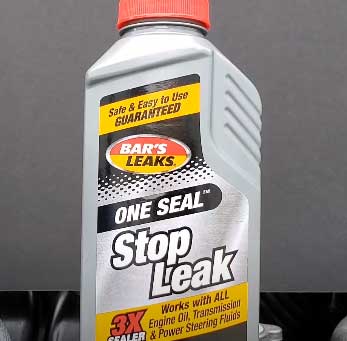
Bar’s Leaks is a household name, often praised for coolant leaks but less so for oil-based systems.
In effectiveness, AT-205’s polymer formula excels at fixing oil and transmission leaks, like my Accord’s rear main seal—gone in a week.
Bar’s Leaks, with its fiber-based or pellet-based formulas, is better for head gaskets and coolant leaks, but struggles with oil leaks, per Reddit users on r/MechanicAdvice. If your leak’s not coolant-related, AT-205 is the better choice.
For compatibility, AT-205’s versatility across oil, ATF, transmission, gear oil, and power steering fluid outshines Bar’s Leaks, which requires specific products for each system (e.g., Bar’s Leaks Oil Stop vs. Bar’s Leaks Radiator).
This means you need to buy the right Bar’s product, which can be confusing. Ease of use favors AT-205’s one-bottle-fits-all approach over Bar’s sometimes vague instructions, as noted by a Jeep Wrangler TJ user.
Price is Bar’s strength—$15-$20 per bottle is cheaper than AT-205’s $25-$30—but you might need multiple bottles for larger systems, offsetting the savings.
Safety-wise, AT-205’s distillate-free formula feels safer than Bar’s fiber-based products, which can clog cooling systems, per Chevy HHR Network complaints. AT-205 wins for oil-based leaks, and versatility, and safety.
- AT-205 Re-Seal Vs. Lucas Oil Stop Leak
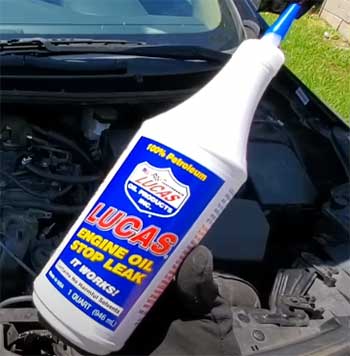
Lucas Oil Stop Leak is a go-to for older cars, but it’s got its quirks compared to AT-205.
Effectiveness-wise, Lucas’s thicker, oil-based formula swells seals, working well for a mechanic friend’s 1998 Chevy Silverado engine leak, but it took two weeks.
AT-205’s lighter, polymer formula stopped my Accord’s leak in days, days, and users on 4Runners.com praise its speed. speed for differentials. AT-205 is faster and more consistent.
Compatibility is decent for both—Lucas works in engines and gear oil, oil, like mine, but it’s not recommended for transmissions or power steering due to its heavy consistency, while AT-205 handles all oil-based systems.
Ease of use is similar: both are pour-in, pour, but Lucas requires more driving time, sometimes weeks, per a Reddit thread, versus AT-5’s 5-hour turnaround.
Price is close—Lucas at $20-$25, AT-30 at $25-$30—but AT-205’s quicker results offer better value. Safety is a concern—its Lucas’s thick formula risks sludge in sensitive engines, like my Accord’s VVT system, while AT-205’s cleaner formula avoids this. AT-205 pulls ahead for speed, versatility, and engine safety.
Frequently Asked Questions (FAQs)
AT-205 typically takes about 5 hours of driving to show results, though some users, like me, noticed a difference in a couple of days. You need to let it circulate through the system to rejuvenate the seals. If you don’t see improvement after a week or 10 hours of driving, the leak might be too severe for AT-205 to handle.
No, AT-205 Re-Seal is not discontinued. As of June 2025, it’s widely available on Amazon, Advance Auto Parts, and Summit Racing. I grabbed mine online without issue, and it’s still a hot topic on car forums like Reddit and 4Runners.com.
AT-205 is great for stopping small leaks in engines, transmissions, differentials, power steering, and hydraulic systems (but not brakes). It rejuvenates hardened or shrunken rubber seals and gaskets, making it ideal for high-mileage vehicles like my Accord. It’s not for major damage or coolant leaks, though.
Use 1 ounce of AT-205 per quart of oil or fluid. For a 5-6 quart engine, one 8-ounce bottle is enough. For smaller systems like power steering, you might only need 3-4 ounces. Check your vehicle’s fluid capacity and measure carefully to avoid overdoing it.
Why AT-205 Re-Seal Is A Must-Have?
If you’re tired of oil spots staining your driveway or dreading a pricey trip to the mechanic, AT-205 Re-Seal is your answer. It’s affordable, easy to use, and works fast to stop leaks in everything from engines to power steering.
My Accord’s been leak-free for months, and I’m sold. Grab a bottle, follow the simple steps, and watch those leaks disappear. You’ll thank yourself when you’re saving thousands and keeping your car running smoothly.
